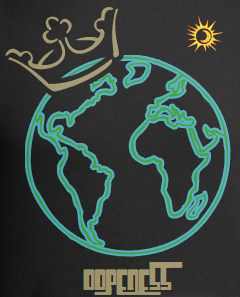
Every June, we give time to think about Black Music Month — not just as a focus on sound, but as a recognition of power, memory, and movement. Black music is more than entertainment; it’s a blueprint of survival, joy, protest, and innovation. It has always shaped the culture, from ancient Africa to today’s charts.
At the heart of this celebration is the Dopetivity Dopeness Project, a creative platform and cultural force dedicated to preserving, amplifying, and innovating within the traditions of Black artistry. We move with intention, tracing the lineage of rhythm and soul across centuries — because to understand our music is to understand ourselves.
Let’s begin before the microphone, before the records spun — back where the drum first called.
Pre-Colonial Africa: The First Sound of Civilization
Before there were countries called America or genres like hip-hop, there were African kingdoms and tribal societies where music was life. It wasn’t separated from spirituality, governance, storytelling, or healing — it was all those things.
- Drums were central — not just instruments but communicators. Talking drums in West Africa were used to send messages across villages.
- Call-and-response, polyphony, and complex rhythmic layering were foundational techniques — ones that would show up later in blues, jazz, gospel, and beyond.
- Music marked births, funerals, marriages, and war, and was a bridge to the ancestors.
👉 Dopetivity Lens: The origin of dopeness lies here — in sacred expression, community connection, and unfiltered creativity. We don’t imitate the past — we inherit it.
1600s–1800s: Enslavement, Resistance, and Spirituals
As Africans were stolen and brought to the Americas through the Transatlantic Slave Trade, they carried their music in their bodies and souls — even when stripped of drums and language.
What Emerged:
- Work Songs: Sung in the fields to keep rhythm and spirit.
- Negro Spirituals: Religious songs rooted in Old Testament stories — double-coded as tools of hope and resistance (“Wade in the Water” or “Follow the Drinking Gourd”).
- Ring Shouts & Hollers: Communal practices that preserved African rhythms and movement.
👉 Dopetivity Note: These songs were the first coded messages of Black survival in America — proto-protest music. Dopeness under oppression is not just talent — it’s strategy.
Early 1900s–1920s: The Blues and Jazz Emerge
As Black people moved north during the Great Migration, their sound traveled with them — and evolved.
The Sound:
- Blues (Mississippi Delta to Chicago): Expressing sorrow, struggle, and humor. Artists like Ma Rainey, Bessie Smith, and Lead Belly were early icons.
- Jazz: Born in New Orleans, fueled by improvisation and rebellion. Louis Armstrong, Jelly Roll Morton, and Duke Ellington revolutionized music theory and style.
👉 Dopetivity Parallel: The idea of remixing, reshaping, and re-owning identity is core to our project. Jazz and blues didn’t ask to be accepted — they created their own universe.
1930s–1940s: Gospel, Big Bands, and Be-Bop
During the economic downturn of the Great Depression, Black music became a source of spiritual strength and joy.
- Gospel took hold in churches and on records, led by Thomas Dorsey and Mahalia Jackson.
- Big Band & Swing (Count Basie, Ella Fitzgerald, Cab Calloway) brought sophistication and style to the mainstream.
- Be-Bop: Invented by Charlie Parker and Dizzy Gillespie, it broke all the rules and pushed musical boundaries.
👉 Dopetivity Lesson: When the world is burning, Black artists build fire with finesse. Rebellion has rhythm.
1950s–1960s: The Civil Rights Soundtrack
Music became both celebration and weapon.
- Rock & Roll was born from Black innovation — Chuck Berry, Little Richard, and Sister Rosetta Tharpe are the unsung architects.
- Soul Music (Ray Charles, Sam Cooke, Aretha Franklin) fused gospel roots with pop accessibility.
- Freedom Songs and protest anthems accompanied marches and sit-ins.
👉 Dopetivity Core: Art is activism. Sound has always been strategy. When we drop music, we’re dropping messages.
1970s: Funk, Soul Power, and Hip-Hop’s Birth
As Black consciousness grew, so did the music’s swagger and message.
- Funk exploded (James Brown, Parliament, Sly Stone) with heavy bass and unapologetic Blackness.
- Reggae also made global waves, rooted in African spirituality and resistance.
- Hip-Hop was born in the Bronx — not in studios, but at block parties and street corners (DJ Kool Herc, Grandmaster Flash).
👉 Dopetivity Creed: We represent the full spectrum — art, politics, party, and protest. Funk said it loud: I’m Black and I’m proud. We still say that.
1980s: Rap Becomes the Voice of the Streets
From party rhymes to social critique, hip-hop matured.
- Public Enemy, N.W.A., and KRS-One used lyrics as weapons.
- Graffiti, breakdancing, and DJing created a holistic culture, not just a genre.
- Michael Jackson, Prince, and Whitney Houston made Black pop global.
👉 Dopetivity Impact: This era proved our creativity isn’t local — it’s international. We’re not guests in global culture; we’re architects.
1990s: The Golden Era — Lyricism, Consciousness, Soul
The 1990s are often called the Golden Age of Hip-Hop and Neo-Soul Renaissance.
- Tupac, Biggie, Lauryn Hill, OutKast, and Nas defined lyricism.
- Neo-soul (Erykah Badu, D’Angelo, Jill Scott) brought spiritual depth and cultural healing.
- R&B & Hip-Hop fused, shaping youth culture forever.
👉 Dopetivity Flow: This decade teaches us that substance is sexy. Realness resonates. That’s the vibe we carry in every Dopetivity drop.
2000s: Global Dominance, Digital Rebirth
Music shifted from the corner to the cloud.
- Jay-Z, Kanye West, Beyoncé, Lil Wayne, and Pharrell turned hip-hop into business, fashion, and film empires.
- The internet democratized creation — MySpace, blogs, mixtapes changed how music was made and shared.
- Southern hip-hop took over (OutKast, T.I., UGK, Lil Jon).
👉 Dopetivity Mindset: Ownership is everything. If we create it, we claim it. We brand it. We build with it.
2010s: Streaming, Social Justice, Sonic Evolution
Black artists dominated charts — and conversations.
- Kendrick Lamar, J. Cole, SZA, Childish Gambino, and Beyoncé pushed the boundaries of artistry and activism.
- Streaming platforms let independent Black artists thrive.
- The music reflected movements: #BlackLivesMatter, #MeToo, Black Trans Lives — all echoed in the beats.
👉 Dopetivity Realization: It’s not enough to be heard. We want to heal, educate, and elevate. Our sound is our soul.
2020s–Now: Afrofusion, Viral Waves, & Black Culture as Default
The new era is digital, diasporic, and deeply Black.
- Afrobeats, Drill, Trap, and Alté connect the diaspora like never before (Burna Boy, Tems, Tyla).
- TikTok and social media turn unknowns into stars overnight — yet Black creators often drive virality without recognition.
- Cultural style, slang, and sonic texture are undeniably African American-influenced.
👉 Dopetivity Now: We don’t just reflect culture — we set it. This is our table, and we’ve been the vibe since Day 1.
In Conclusion: The Soundtrack Is Ours
Black music is not a genre. It’s the foundation of American and global music. From the drum circles of Ghana to the gospel choirs of the South, from boom-bap to Afrobeats — Black music is culture.
And the Dopetivity Dopeness Project is the modern echo of that ancestral rhythm. We document it. We celebrate it. We expand it.
This Black Music Month, and every month, we’re here to remind the world:
Our music is resistance. Our sound is sacred. Our dopeness is legacy.
✨ Stay dope. Stay tuned. Stay loud.
#BlackMusicMonth #DopetivityDopeness #FromAfricaToTheAux #SoundIsPower

SIDENOTE: Also… Sorry if my list doesn’t include your names specifically, all yal dope to me if I can tolerate listening to you for more than 3 mins…
